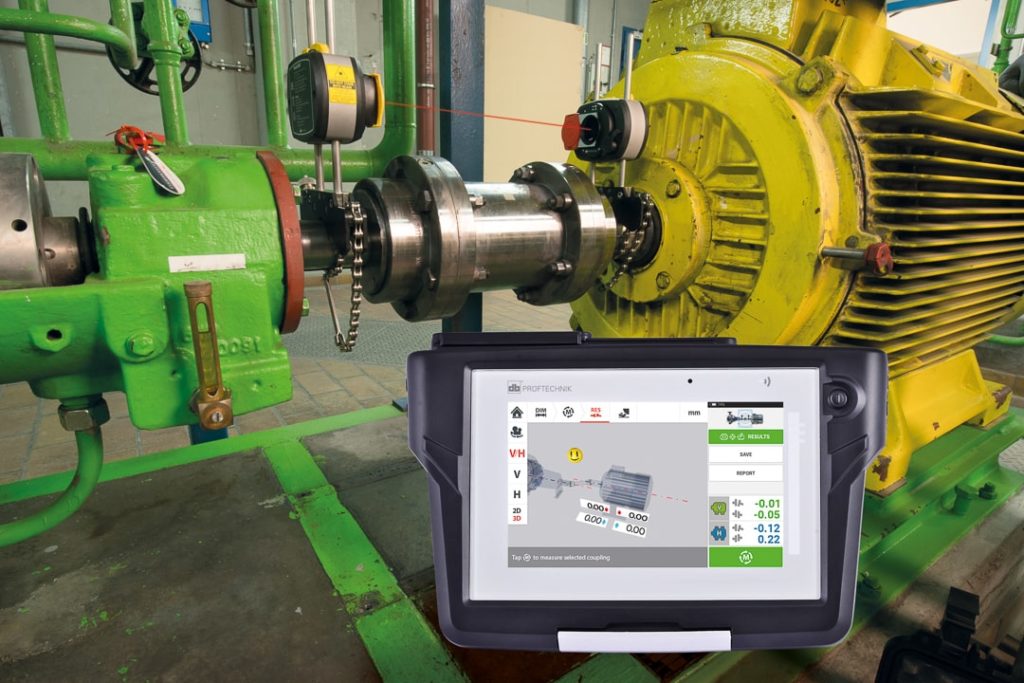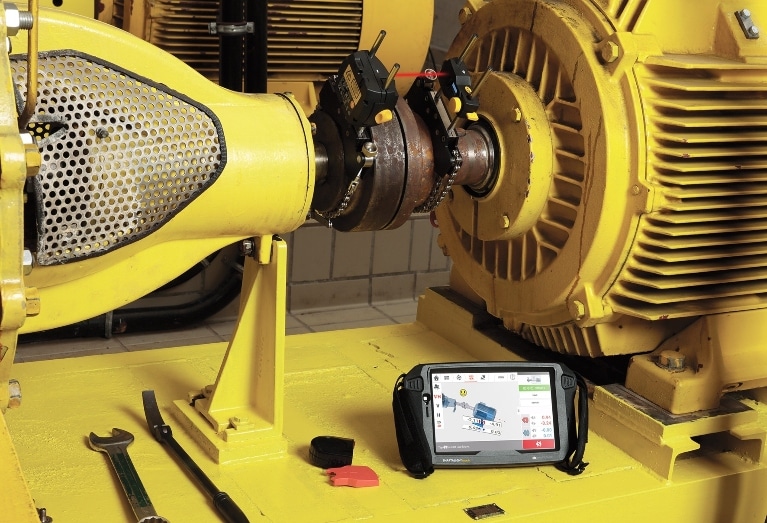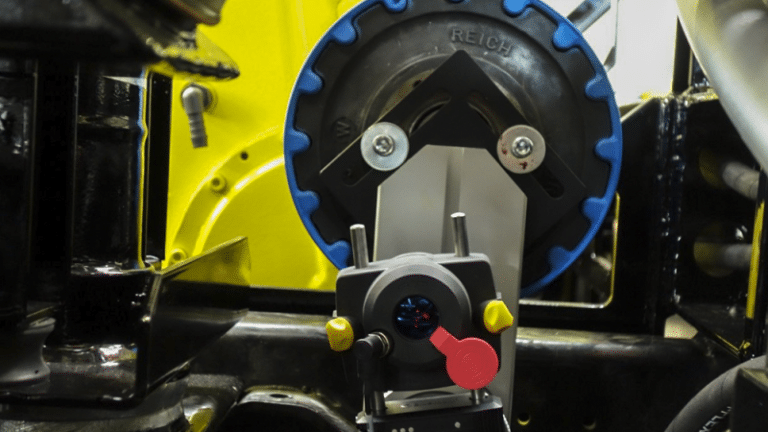Machinery misalignment is one of the prime causes of equipment downtime, and it often results in increased energy costs and damaged machinery. Misalignment occurs when a motor’s centerline does not line up with that of the equipment’s shafts. Proper shaft alignment is especially important for rotating equipment operated at high speeds, as misalignment can be especially damaging and even dangerous.
A properly aligned shaft provides the most efficient power transmission from a motor to the driven equipment and therefore increases the operating lifespan of the machinery. When equipment is properly aligned, there’s less need for repairs and replacements — freeing up your maintenance team to focus their time where it matters most.

For many plants, however, constant alignment monitoring has historically been unachievable due to limitations in technology. However, advances in condition monitoring systems, as well as modern laser alignment tools, now enable an increased focus on alignment and a deeper understanding of how a machine’s alignment changes over time.
Types of Misalignment and their Consequences
Motors face three main types of misalignments: angular misalignment, offset/parallel misalignment, and combination misalignment—when a motor shaft experiences both types of misalignment at the same time.
Machinery experiencing any type of misalignment is bound to require more replacement parts than properly aligned machinery. As a result, misaligned machines divert excessive parts and labor away from other needs, and they become expensive and time-consuming to maintain. For example, misalignment can often cause seals to fail, resulting in fluid leaks which harm other machine components.
In moving and rotating machinery, misalignment can also cause excessive vibration, resulting in premature failures in bearings, couplings, or shafts. These failures can go on to damage other components, leading to downtime.
While flexible couplings can tolerate some misalignment, they are still subject to tolerance limits. In addition, using flexible couplings is not a substitute for proper alignment. In fact, using a coupling that is too tolerant of misalignment can actually cause increased vibration or unbalanced rotation.
Achieving and Maintaining Precise Machine Alignment
Attention to a machine’s alignment shouldn’t end after its installation. A machine’s alignment is fluid, and misalignment can be caused by many different factors or conditions that can occur throughout the life of the machine. For instance, alignment can change when the machine experiences fluctuations in temperature, pressure, load, or vibration.
New equipment should be checked for changes in alignment after several months in case of settling, and the most production-critical equipment should be checked on a regular basis. Alignment data can be captured whenever equipment is down for maintenance, and it can provide insights about ways that a machine’s alignment can be improved.
For example, it is crucial to be aware of and record the correct operating temperatures of a machine’s components during normal operation, because heat can cause materials to expand—risking a change in a machine’s alignment. Also, keep in mind that the original equipment manufacturer’s (OEM) data can differ from real-world operating conditions, so you should establish your own baseline of temperatures to allow deviations to stand out.
Many successful maintenance teams use condition monitoring to collect asset data in real-time. Usage and wear eventually cause failures, so every machine will require intervention at some point — but condition monitoring can provide the insights you need to identify failures before they happen. The frequency and detail of the monitoring can be tailored to the criticality of the machine.
Using Condition Monitoring Sensors and Analysis Software
Condition monitoring is a cost-effective way to track asset health in real-time. Sensors and software make it possible to detect misalignment problems before they lead to failures and downtime — measuring alignment around the clock and without the need for a team member to take measurements on-site.
Many teams consider kickstarting their condition monitoring program with vibration monitoring, as it’s especially effective. Vibration data offers a full picture of asset health, with different types of vibration indicating various alignment issues.
There are a wide range of vibration measurement tools available, depending on your budget and application: handheld vibration detector tools collect basic data during route-based maintenance, while more advanced vibration sensors permit around-the-clock, offering in-depth condition monitoring of critical assets.
Additionally, vibration analysis software makes it possible to interpret asset data, and some even offer the ability to customize operational thresholds and send notifications when an asset operates outside of those defined limits. From there, a maintenance team can intervene as necessary and diagnose the problem.
With a full picture of asset health, you can more effectively determine which maintenance actions need to happen and when. This predictive maintenance strategy increases uptime while reducing spending—as opposed to traditional calendar-based maintenance, which doesn’t neatly or necessarily correspond to actual asset condition.
To learn more, see What is the Difference Between Predictive and Preventative Maintenance?
Maintenance teams should aim to keep machinery in peak operating condition rather than responding to failures reactively, which hampers reliability, efficiency, and production. Using real-time knowledge of asset condition enables teams to utilize the full lifespan of a machine’s components and schedule repairs in advance.
Taking a Proactive Maintenance Approach to Machine Alignment
Machine alignment is not a “set-it-and-forget” it type of event. To understand how the alignment of your machines change over time, you need to collect and analyze machine condition data. That real-time asset data makes it possible for teams to identify and resolve potential problems before they escalate.
Not only does condition monitoring reduce the number of times technicians need to access hard-to-reach or hazardous areas as part of route-based maintenance, but planned repairs are much safer than emergency corrective repairs. With a combination of condition monitoring and software, your team can remotely monitor assets by accessing real-time measurements from a desktop computer or a smartphone. Having an overall view of asset health helps teams plan and prioritize.
Making data-driven decisions improves operations — but is only possible when teams have the right data and know what to do with it. Maintenance teams that don’t pay attention to machine alignment are operating with a blind spot.
Keeping your machinery properly aligned has numerous benefits. It reduces downtime, decreases your energy bills, extends the life of your equipment, and allows your maintenance team to optimize their time and effort. In today’s competitive landscape, the costs of wasted time, energy, parts, and materials add up quickly. Availability and reliability are key. Being proactive about alignment can mean more uptime with less spending.


